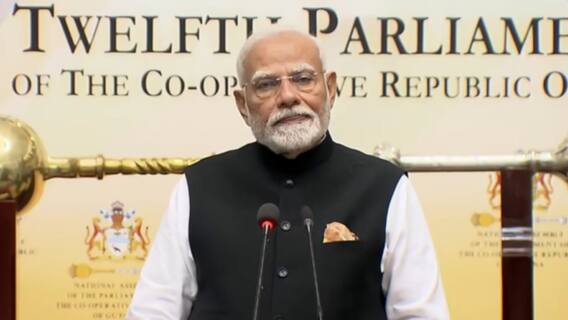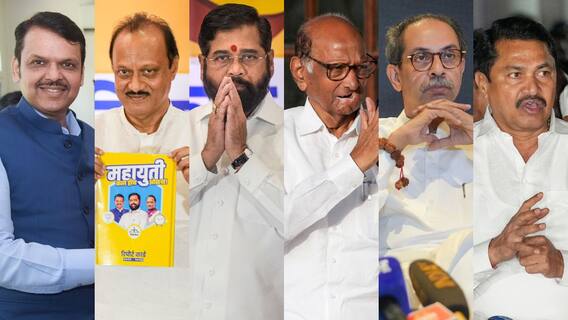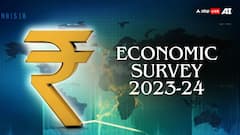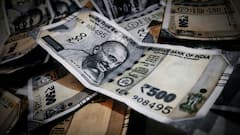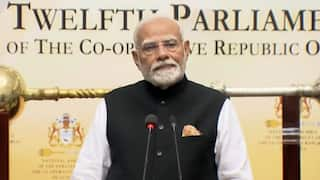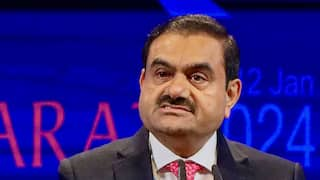India’s Investment To GDP Ratio To Touch 36 Per Cent In FY27: Morgan Stanley
The experts said that during the 2003-07 period, investment to GDP climbed from 27 per cent in the 2002-03 fiscal year (ending March 2003) to 39 per cent in the 2007-08 fiscal year

India’s current economic growth journey resembles that of the 2003-07 period, when growth clocked an average of over 8 per cent, economists at Morgan Stanley said. The experts in the report titled, ‘The Viewpoint: India - Why this feels like 2003-07’, said that this growth pattern has emerged with the capex as a major driving force behind it.
“We think the capex cycle has more room to run, therefore the current expansion closely resembles that of 2003-07.The current cycle is driven by investment outperforming consumption, public capex leading initially but private capex rapidly catching up, the urban consumer leading consumption followed by catch-up in rural demand, market share in global exports rising and macro stability risks kept in check.We think the defining characteristic of the current expansion is the rise in the investment-to-GDP ratio,” the Morgan Stanley report noted, reported PTI.
The experts at the fintech further said that during the 2003-07 period, investment to GDP climbed from 27 per cent in the 2002-03 fiscal year (ending March 2003) to 39 per cent in the 2007-08 fiscal year. The growth of investment to GDP then remained around these levels till it reached its peak in the 2010-11 fiscal year.
The research report noted that the growth pattern registered a decline during the 2011-21 period, however, the ratio currently stands at 34 per cent of GDP and is expected to climb to 36 per cent of GDP in 2026-27 fiscal year.
“In 2003-07, the capex boom led to an acceleration in productivity, job creation and income growth. As more labour was absorbed into employment by the strengthening economy, savings to GDP also rose from 28 per cent in F2003 to 39 per cent in F2008. During 2003-07, GDP growth averaged 8.6 per cent and headline CPI inflation averaged 4.8 per cent. The current account balance stayed within the central bank's comfort zone, ranging between 2.8 per cent to -1.4 per cent of GDP on a 4Q trailing sum basis. Even when oil prices shot up to $145 per barrel in July 2008, the current account deficit only widened to 2.4 per cent of GDP the following quarter,” the report noted.
Gross fixed capital formation (GFCF) growth in India climbed sharply from 8.2 per cent in 2002 to 17.5 per cent in 2004, and this momentum remained steady at 16.2 per cent in 2005-07, it added. Regarding the growth momentum in the current cycle, the report noted that real GFCF growth remained robust and stood at 10.5 per cent in the October-December period, hovering over the 2017-18 average of 9.6 per cent.
This growth momentum was attributed to public capex, the report said, ‘as the corporate sector has been working through multiple shocks from previous years that have weighed on its ability to invest. Now that corporate profit (based on bottom-up company data) to GDP has picked up from a trough of 1.1 per cent in F2020 to 5.4 per cent in F2023, early signs of private capex gaining momentum are being seen.’
Also Read : What Is TDS And How Does It Affect Your Salary? EXPLAINED
Private Consumption Still Behind
However, it added, that private consumption continued to be tepid, clocking a growth of 3.5 per cent in the December quarter, lower than the pre-pandemic average of 6.5 per cent in 2017-18.
The fintech noted that continued push from the policymakers on reforms in the supply side resulted in the real government fixed capex growth rising sharply. Government fixed capex as a percentage of the GDP climbed from 3.6 per cent in the 2018-19 fiscal year to touch 4 per cent in the 2020-21 fiscal year.
“A capex-led growth cycle can extend expansion, as rising investment to GDP ratios drive capital deepening and boost productivity growth. The deployment of surplus labor as capex creates employment opportunities can lead to higher income and savings in an economy and ensure the current account balance remains in a manageable range, even as investment to GDP rises. The public capex-led nature of the present cycle in India plays an even more important role for the sustainability of the overall capex cycle. Infrastructure projects tend to face long gestation periods but generate large positive externalities. In that sense, we believe it is important for the public sector to undertake such spending to ensure a clearer runway for private capex to take off by eliminating supply-side bottlenecks ahead of time,” it noted.
Top Headlines
Trending News





